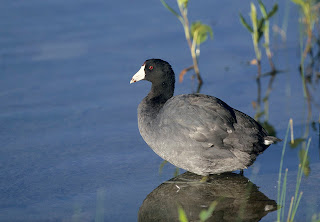I can remember the first game bird I ever killed as a youngster with my Dad. It was a pond-ridden scaup and after several errant shots from a single shot .410 I finally got it. I was proud as could be and at just 9 years old the mold was set.
It's nearly four decades later and I've been introducing my twin boys to the joys of hunting. Although they've killed several turkeys since age 7, it's only been in the last couple years I've trusted their physical ability to safely handle a shotgun on flying game. Doves have been plentiful and they've managed to bag a few, albeit at Dad's expense as shells have been counted in boxes rather than singles. That's okay.
Their first duck hunt came last weekend during the youth season of the Low Plains Early Duck Zone. We hauled my duck boat I've affectionately named "Cluster Duck" out to Cheyenne Bottoms Saturday afternoon. Water isn't plentiful but an early teal season out there proved there were ducks using the area and hunters found good success. I looked forward to showing them something I've cherished for many years.
We were the only boat on the pool at 3:30 p.m. when we launched. We flushed plenty of ducks and the boys were amazed how my Go-Devil mud motor just cut right through the weeds and mud. We looked around before picking a spot where we flushed a big wad of teal, pintails and mallards. I wasn't totally prepared for a blind as early season cover there usually isn't a problem, but we made do with some grass mats I brought along.
The ducks didn't move for quite some time. I was getting K-State/Baylor football score updates from several buddies via text so it helped pass the time. The ducks finally started to move and the boys got a few cracks at their first ducks. Cody was first on the board with a bluewing teal and his brother, Brandon, followed shortly after with one of the same. Shots weren't plentiful, but they managed better percentages than they ever had for doves. They liked ducks a LOT better as they were "slower, bigger and easier to hit!"
The evening ended with a beautiful sunset. Cody tallied three bluewing teal on his strap and Brandon had two pintails and two bluewing teal. I was pleasantly surprised, and proud, of their shooting and considered their first hunt a huge success. Our plan was to stay the night in Great Bend if we had good luck so we headed to town, grabbed some dinner and a motel to eat and watch football.
The next morning was a bit chilly. Forty-seven degrees with a 15 mph breeze made the boys shiver a little bit on the ride out to the marsh. We set up in the same place and waited for daylight. We saw lots of ducks but had fewer opportunities than the previous evening. Fortunately, the sun warmed the boys up a bit and they still managed to shoot a few ducks. Cody killed two bluewing and a greenwing teal and Brandon shot a pintail.
There were 10-12 trucks in the parking lot this morning and I was glad to see others taking advantage of the youth season. From the sounds of it, they were getting plenty of shooting and the occasional downed duck would be obvious with all the whooping and hollering.
As we headed back home, the boys nestled into coat pillows and reclined truck seats for a nap. I'd glance over at them sleeping peacefully and I felt truly blessed. It was a joy to share this experience with my boys. This was one of the things I'd looked forward to being a father. I hope they enjoyed it as much as I did. I also hope they're fortunate enough to share the same kind of experience with their kids a couple decades down the road.











